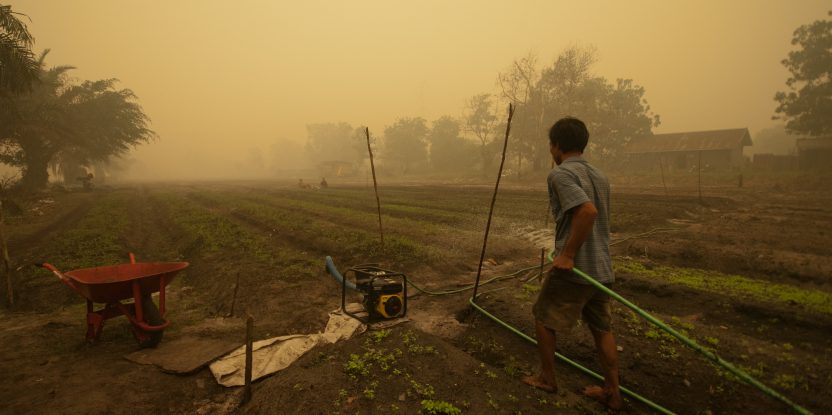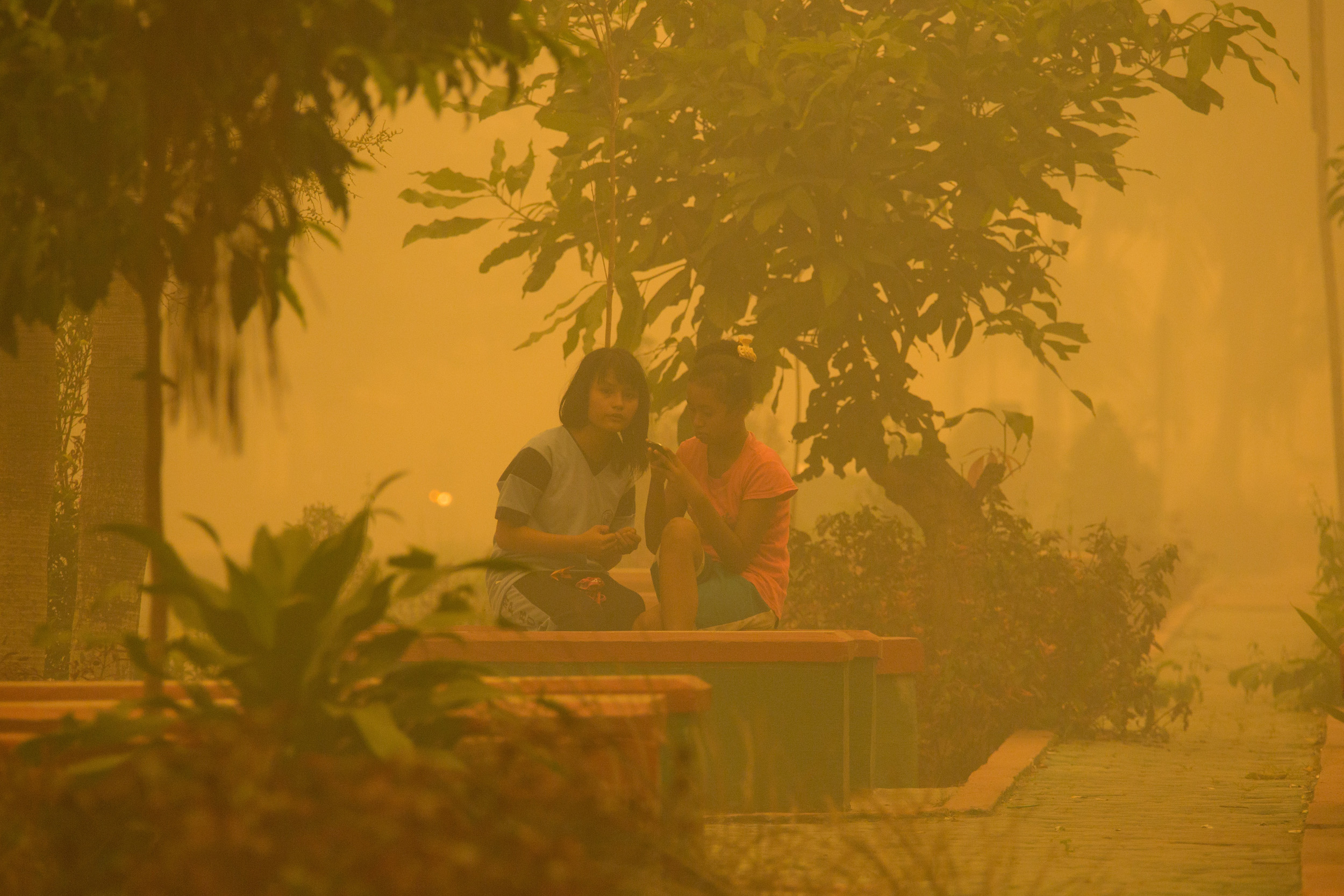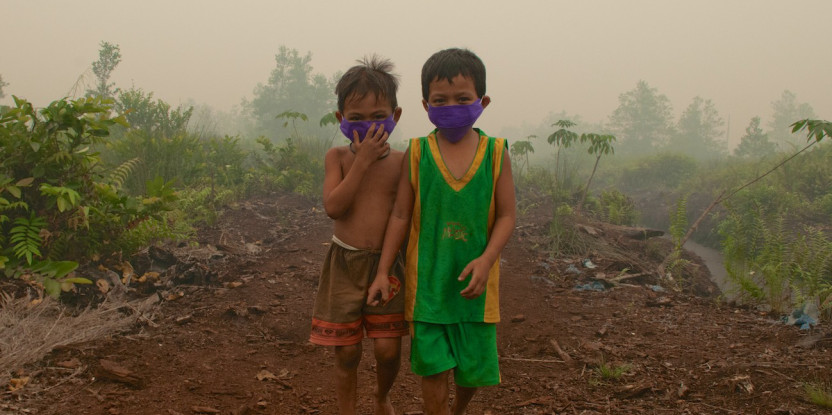
The land fires that swept through Indonesia in 2015 burned some 2.6 million hectares, with the resulting haze causing health problems for tens of thousands of people. The World Bank estimated the cost of damage from the crisis at USD 16 billion.
Meanwhile, research conducted by the Center for International Forestry Research (CIFOR) estimates that 1.2 billion tons of CO2 equivalent were emitted into the atmosphere.
The fires were the worst in almost two decades, in part because it was a dry El Niño year. Since then, heavy rains have kept most of the fires at bay, but what will the future bring? Forests News writer Suzanna Dayne spoke to CIFOR scientist Herry Purnomo about Indonesia’s plans for future fire prevention.
What has been done by the Indonesian government to prevent a repeat of the devastating 2015 fires?
Well, quite a lot really, at least on paper. I worked on the government’s strategy, the so-called ‘grand design’ to prevent forest and land fires nationwide. It’s a massive three-year plan and the estimated cost is USD 3 billion.
It’s very comprehensive and calls for strong laws and regulations, empowering local communities, and giving them incentives not to burn the land. The plan also includes a strategy for blocking canals to stop peatlands from being drained and, of course, fire fighting training and equipment.
What is being done to restore and preserve peatlands?
The Peatland Restoration Agency was established last year with a clear mandate from the Indonesian President to restore 2.4 million hectares of peatland in seven provinces – that’s 1,333 hectares per day. This means bringing the peatland back to its original state so that it can’t be used for pulpwood and oil palm purposes anymore.
Now, the question is: Who is going to do this?
About 80 percent of the peatland targeted for restoration lie in concession areas. The involved companies are not very happy with the government’s plan, even though it has stated that it will pay for it. Companies are asking what’s in it for them incentive-wise.
There have been suggestions to offer alternative land in exchange for the peatlands, but it’s not easy to find one million hectares in a particular area.
Another potential challenge is that the local government may not wholeheartedly support peatland restoration if it hurts the local economy and local livelihoods.
Can this land be bought and then protected?
That’s possible, but you also need to think about the smallholders who rely on the land for their livelihoods. There are many people who work near or in these concession areas. So we need to think about how to provide alternative livelihoods for communities in these peatland areas.
What is the government doing to improve the lives of smallholders in these areas?
There are efforts underway to launch social forestry across 12.7 million hectares of land, as well as agrarian reforms that will provide nine million hectares of land, about half of which will come from non-forested land, to the communities.
Now, a new problem emerges: How will you distribute this land?
Landless farmers are usually less educated and don’t speak up for their rights, so they often miss out on social programs. And in places like South Sumatra, you have young people who want to leave for urban cities, so they will just sell their land. I should point out that this is where NGOs can play a vital role and make sure people are being treated fairly.
What about neighbouring countries like Singapore and Malaysia that were also affected by the haze? Are they doing anything to help Indonesia?
There were several community-based peatland projects executed in collaboration with Malaysia and Singapore. The Association of Southeast Asian Nations (ASEAN) is working on this issue through the ‘ASEAN haze-free vision in 2020’ program. But I think a more radical solution is needed at the ASEAN level. This should include investigating the flow of money from Malaysia and Singapore that is being used to invest in illegal mid-size palm oil plantations.
What about efforts by big concession holders like Asia Pacific Resources International Holdings Ltd (APRIL) to work with communities to prevent fires?
Some of these programs have been successful. However, the problem is that they focus only on a few villages in their immediate vicinity. There needs to be more funding for awareness efforts across the entire country.
Preventing fires, restoring peatlands and providing new livelihoods for people are all ambitious targets. Are you optimistic that they can be achieved?
These problems can certainly be improved upon, but perhaps not eliminated completely. Even if we have USD 3 billion for the new program, I think we can reduce fires by only 50 percent against business-as-usual levels targeted in the grand design for fire prevention.
One thing is clear, however. We need to look at sustainable palm oil options and create a standard for environmentally-friendly products. Overall, we need strong incentives to spur local economies, as well as community empowerment and good peat management.
We also have to make sure that law enforcement can do their job effectively and investigate local hotspots in a timely manner. It’s not like the old days when we didn’t have satellite data. Now, we know exactly where these fires are coming from.
We want you to share Forests News content, which is licensed under Creative Commons Attribution-NonCommercial-ShareAlike 4.0 International (CC BY-NC-SA 4.0). This means you are free to redistribute our material for non-commercial purposes. All we ask is that you give Forests News appropriate credit and link to the original Forests News content, indicate if changes were made, and distribute your contributions under the same Creative Commons license. You must notify Forests News if you repost, reprint or reuse our materials by contacting forestsnews@cifor-icraf.org.



